Mid-Century Modern houses were designed to be aesthetically beautiful and functional, with a large focus on family. Known for its open concept floor plans, flat roofs, walls of glass, clean lines, and focus on integrating nature, it’s no wonder Mid-Century Modern houses are considered a timeless trend. Keep reading to learn why the Mid-Century Modern house style has remained one of the most popular home styles since its start in the 1940s.
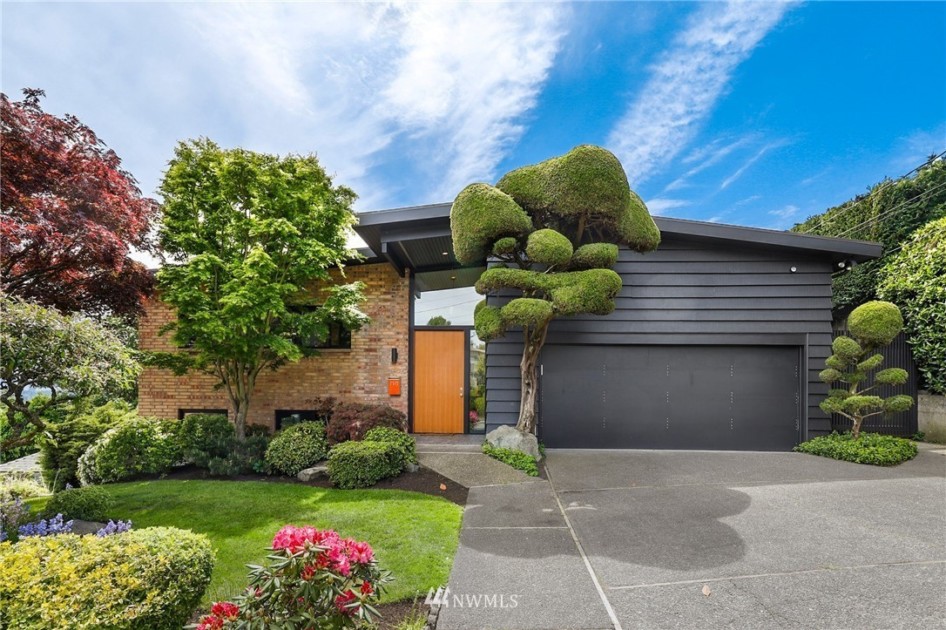
History of the Mid-Century Modern house style
Mid-Century Modern defines the period of design from about the mid-1940s through the mid-1960s. Mid-Century Modern style was brought to the United States by European designers. Notable pioneers include Walter Gropius, Ludwig Mies van der Rohe, and Marcel Breur. Frank Lloyd Wright, the father of Modern architecture, trained and taught many Mid-Century Modern architects.
After World War II, the Mid-Century Modern house style appeared in the U.S. to support the increased demand for suburban homes. At this point, Americans prioritized lifestyle, family, and spending time in nature, all things reflected in the Mid-Century Modern style through open living spaces, large windows, and functional spaces.
“Today, Mid-Century Modern isn’t only a popular style itself, but has also inspired today’s modern design trends,” shares Safdie Rabines Architecture, an architect firm in San Diego, CA. “Keeping the simple, clean lines, using a minimalist pallet of materials, maximizing the use of open space, and blurring the lines between the interior and the garden are the hallmarks of Mid-Century Modern architecture. Great rooms, popular in new construction or remodels, draw their inspiration from the open floorplans of Mid-Century Modern homes.”
Where can you find Mid-Century Modern homes?
Mid-Century Modern-style homes can be found across the United States. Thanks to many regional architects, there are wonderful examples of Mid-Century Modern homes in most cities. However, Palm Springs, CA, the pinnacle of everything Mid-Century Modern, is renowned for this style of architecture.
What is a Mid-Century Modern house?
Typically, the Mid-Century Modern house is built with three characteristics in mind: an emphasis on incorporating natural elements, a clean aesthetic, and the presence of angular structures. Compared to the ornate details of Victorian homes, Mid-Century Modern homes have wide but low footprints, large floor-to-ceiling windows, a minimalistic style, and an emphasis on natural surroundings. Let’s dive into the defining features of a Mid-Century Modern house style.
Distinct styles of Mid-Century Modern homes
During its initial boom from 1945 to 1969, Mid-Century Modern architecture was divided into three distinct styles:
International
This version is inspired by international architects and heavily influenced by the Bauhaus movement. Homes are simple, with little to no decoration, and typically finished with stucco. Other characteristics of the international style include rectangular structures, large windows, and open interiors. Materials often include steel, concrete, and glass.
Contemporary
Like the international style, contemporary Mid-Century Modern houses feature clean lines and floor-to-ceiling windows. These homes incorporate more natural and organic materials like wood, stone, and brick, and typically have asymmetrical exteriors with windows extending to the roofline and exposed ceilings and beams in the interior.
Organic
The organic style emphasizes blending indoor-outdoor living to embrace their natural surroundings. Compared to its counterparts featuring sharp lines and right angles, this style uses more natural shapes. Because of this, an organic Mid-Century Modern home in the desert will have an entirely different look and feel than one in the forest.
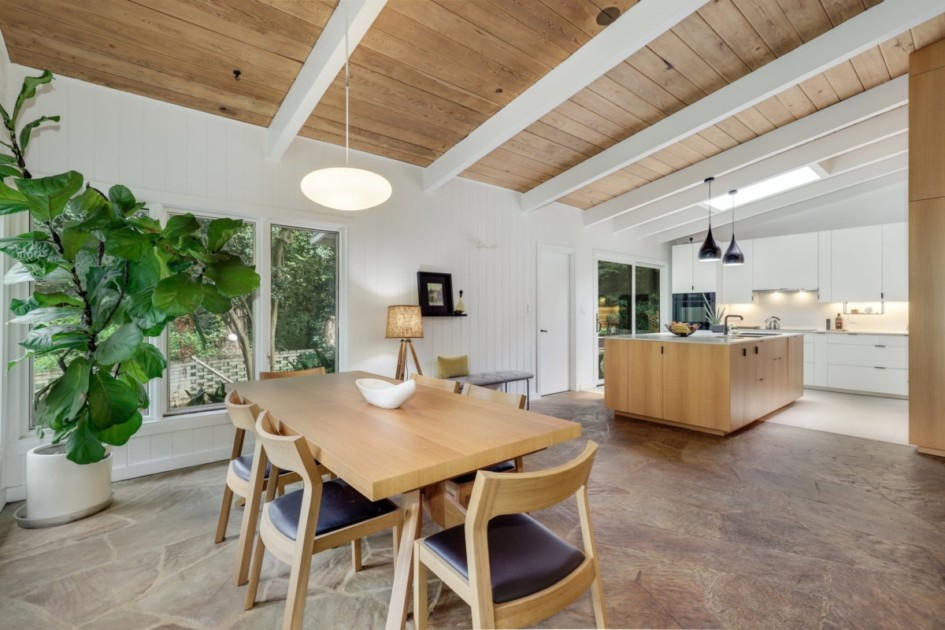
Defining features and characteristics of a Mid-Century Modern house:
Functional spaces
Function is the framework and foundation for designing a Mid-Century Modern space. Similar to the Scandinavian approach, Mid-Century Modern homes consist of warm, inviting tones, versatile furniture, and understated decoration, emphasizing the room’s function.
Well-balanced rooms
Too much furniture and decor can make a room feel overcrowded and cluttered, while too little can make a space feel empty and drab. Mid-Century Modern homes make the most of the space by maximizing the room’s function.
Minimalist Aesthetic
Simple furnishings with clean lines and a muted color palette complement the simple exterior of a Mid-Century Modern home. You’ll often see the use of large statement pieces, like sculptures or plants rather than small trinkets or collections, and furniture is kept simple with sleek lines with wooden or metal pin-style legs. The boxy and minimalistic exterior of the Mid-Century Modern home tends to be monochromatic and neutral, with earth tones using brick or wood-paneled siding.
Complementary to nature
Connecting with nature is paramount. To encourage this, rooms will often have multiple outdoor views and access points to nature, large floor-to-ceiling windows, or sliding doors to allow natural light to enter and encourage a sense of harmony with the outdoor spaces. You’ll also see a connection to nature in other forms, such as the use of raw materials and houseplants as decoration.
Clean lines, flat planes, and geometric shapes
Flat planes and clean lines are hallmarks of this house style, with the roofline considered one of the most iconic features of the Mid-Century Modern home. To add character to a room, you’ll often see furniture, rugs, window treatments, and artwork with geometric patterns resembling starbursts, atomic, and boomerang features.
Changes in elevation
Typically, a Mid-Century Modern house is single-story or split-level with short staircases – even just a few steps – leading up and down between rooms. Partial walls, centered fireplaces, and cabinetry also add depth and variation in elevation.
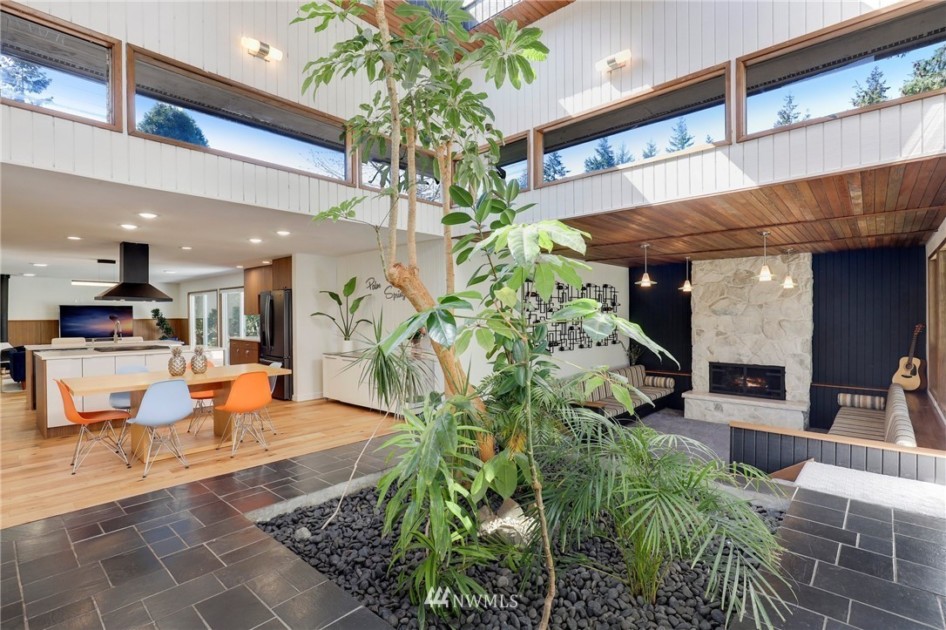
Design tips for a Mid-Century Modern house
The Mid-Century Modern style represents an iconic time in U.S. history. If you’re looking to make minor design tweaks to your home or a full renovation while staying true to the Mid-Century Modern style, here are a few fresh design ideas, straight from the experts:
Focus on form, function, and flow
“Form, function, and flow are the key principles to employ when designing and furnishing a Mid-Century Modern home,” shares Tommy Lei, Founder and Principal Styleteller at MYBELONGING. “It’s all about creating a nice sense of flow and visual movement for the eyes. The Noguchi coffee table is a great focal point in any lounge or living room, paired with a laid-back Herman Miller Eames lounge chair. I love to accentuate a Mid-Century Modern space further with a delicate yet structural hanging light, akin to a Japanese Akari or George Nelson saucer lamp. And, of course, finish off the space with a gallery wall filled with antique Japanese silkscreen paintings and Joan Miro artwork.”
Mix materials, textures, colors, and forms
“Mid-Century Modern allows homeowners to mix materials, textures, colors, and forms in new ways that respond to a range of aesthetics today,” adds Machine Age, an expert in Mid-Century Modern furniture from Europe and the Americas. “Classic, clean-lined Mid-Century pieces can inject freshness into traditional interiors. At the same time, the plusher organic forms can make a minimalist space inviting.”
Stay consistent with the style
“If you’re going for the Mid-Century Modern look, don’t randomly buy a few Mid-Century Modern pieces, throw them into your home, and call it a success,” advises Edgar Blazona, founder of BenchMade Modern. “Instead, make sure you start with an updated, modern space and gradually layer in Mid-Century Modern pieces. Focus on clean lines paired with classic, geometric shapes, and open sides. This sleek, functional look is iconic and withstands the test of time.”
Look for furniture with textured fabrics, button tufting, and cone legs
“You don’t need to live in a ranch-style house to add Mid-Century furniture to your decor,” says Willi Galloway, the Founder of Perch Furniture, a custom furniture store in Portland, OR. “The great thing about this style is that it has simple, clean lines that mix and match well with more modern or transitional styles. This quality allows Mid-Century furniture to play nice in everything from a Craftsman bungalow to a modern loft. Textured fabrics, button tufting, and round, tapered cone legs are classic design hallmarks of Mid-Century upholstered furniture.”
Don’t be afraid of mixing styles
“Mid-Century Modern design fits in well with other furniture and design styles,” states Kelley Wehman at Carousel Consignment SF. “Mix Mid-Century Modern pieces with some of your favorite family antiques or your already existing clean, contemporary pieces. Don’t be afraid to update authentic Mid-Century chairs or seat cushions with your favorite modern upholstery. It all works well together.”
Look to vintage furniture
“You don’t have to “go retro” to benefit from the timeless style of Mid-Century Modern furniture and decor, says Jackie Williams and Todd Wilson, owners of Furnish Me Vintage. “The clean lines of Mid-Century Modern furniture blend seamlessly with many decor themes. This means you can update your look without getting rid of the pieces you love. Add comfort to your living room with a sleek Danish recliner. Elevate your contemporary home furnishings with Mid-Century Modern case goods made of old-growth walnut and teak woods or aged leather. Superior materials and craftsmanship are hard to find in today’s home furnishings. When you buy vintage, you’re making an investment. Vintage furniture is functional art, an asset that you can use and enjoy, much like your home itself.”
How to find Mid-Century Modern homes in your area
If a Mid-Century Modern house fits your style, Redfin can help you find one in your area. It’s as simple as:
- Go to Redfin.com and type into the Search Bar either the city’s name or a zip code where you’d like to begin looking for a home – Palm Springs, CA for example. Press enter.

- Near the top of the next page on the right side, you’ll see “All Filters”. Click that button and scroll to the “Keyword search” box near the bottom of the page.

- Type the word “Mid-Century” into the Keywords box and press “Apply Filters.” Voila! All Mid-Century Modern houses for sale within the zip code you entered will populate and can begin your search.





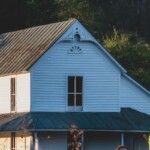

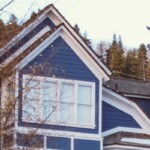
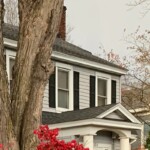
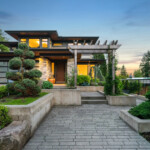


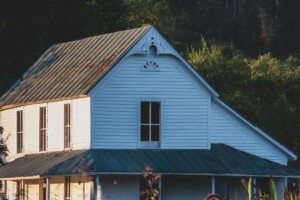
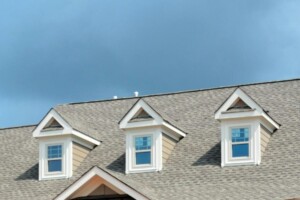
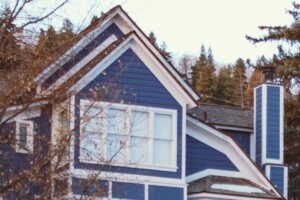
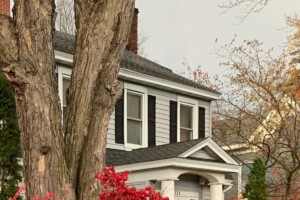












 United States
United States Canada
Canada